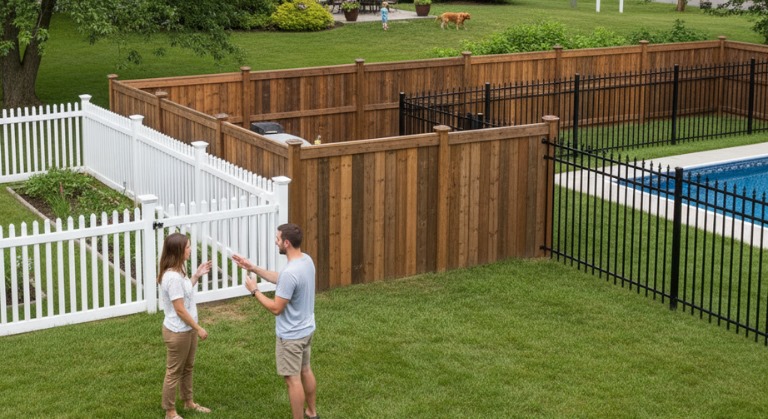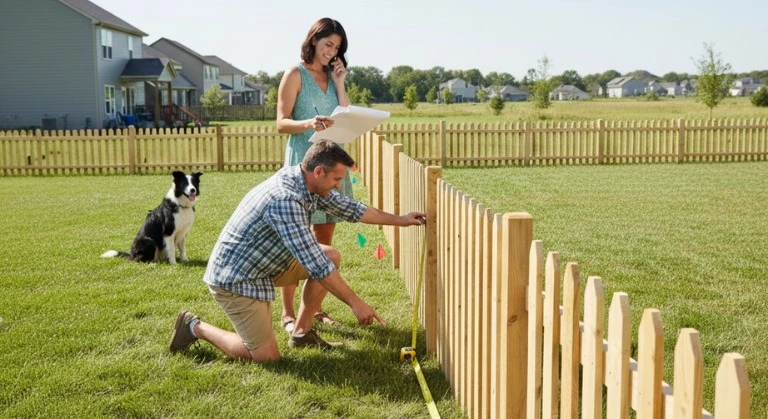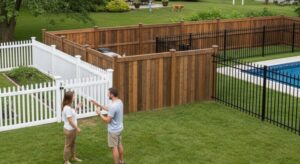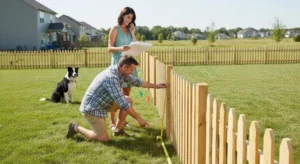Fences do more than just show where your yard ends. They give you privacy, keep your space safe, and make your house look nicer. But because fences are outside all the time, they can get damaged as the years go by.
So, when to replace a fence becomes an important question for every homeowner or property manager. If you’re dealing with rotting posts, broken panels, or a leaning fence, spotting the signs of fence damage early can help you avoid spending too much money or time later.
This article will show you how to tell if it’s time to get a new fence, how to know when you can fix it instead, and what to think about before you decide.
Why Replacing Your Fence Matters
Fences last a long time, but not forever. Ignoring old fence issues can cause problems. Someone might get hurt, your house might lose value, or you could have trouble with your neighbors if the property lines aren’t clear anymore.
Let’s look at the signs of fence damage that show it might be time to stop repairing and get a new fence.
Your Fence is Leaning or Sagging
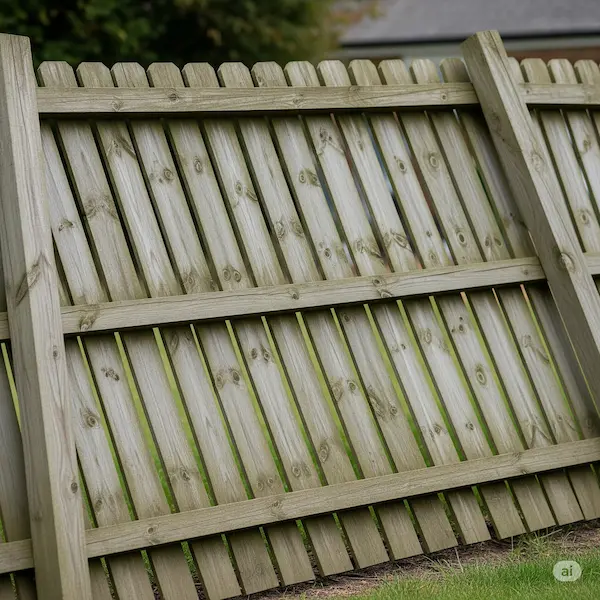
One of the easiest signs of fence damage to spot is when your fence leans or sags. This usually means there’s something wrong with the fence posts. If more than one part is tilting, there might be a bigger problem, like the ground shifting or lots of rot.
What It Means:
If only one part is leaning, you might be able to fix it. But if several parts are off, you should think about replacing the whole fence.
Rotting Wood and Decay
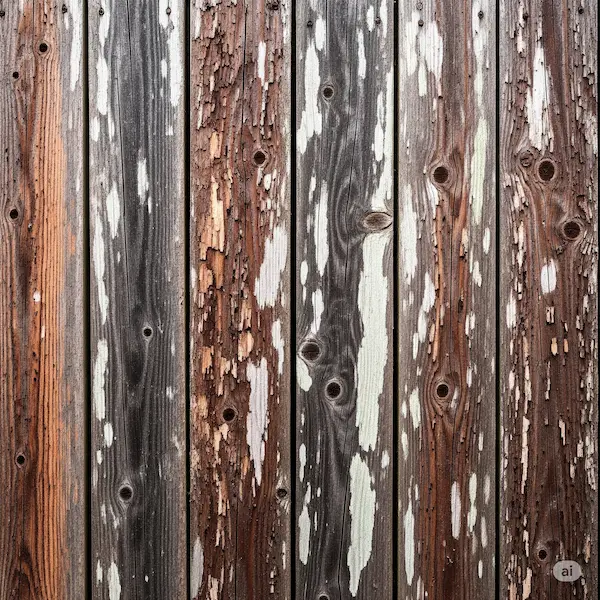
Wood fences can rot, especially if you live where it rains or snows a lot. Rotting posts are a big problem because they hold the whole fence up. To check for rot, press a screwdriver into the wood. If it sinks in or the wood breaks apart, there’s rot.
Look out for:
| Issue | Potential Fix | Replace Needed? |
|---|---|---|
| Minor surface rot | Scraping + sealant | No |
| Multiple rotting posts | Post replacement or full fence | Yes |
| Widespread decay | Full fence replacement | Definitely |
Tip: You can slow down rot by sealing the wood often, but once it starts, you can’t undo it.
Broken or Missing Panels
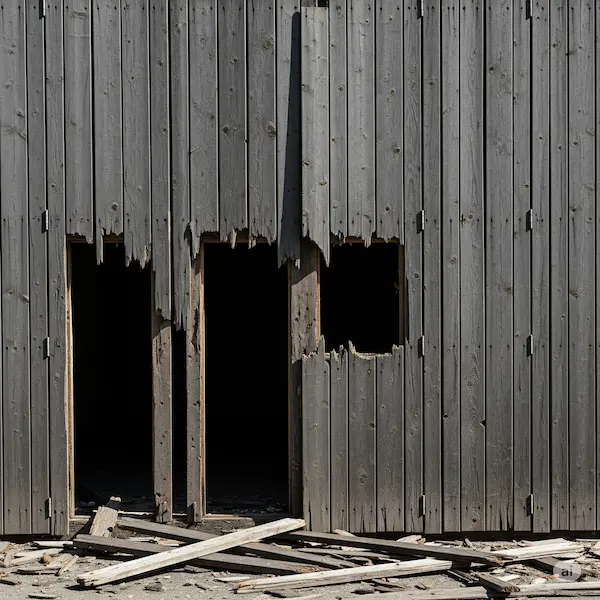
You can replace a few broken panels easily. But if panels keep breaking because the fence is old or damaged by weather, or you keep fixing the same spot, it might be a sign that your fence is too old.
Key Indicators:
- Cracked, warped, or missing boards
- Repairs that don’t match and make the fence look bad
- Panels falling off even when there’s no wind
Rust and Corrosion (For Metal Fences)

If your fence is made of metal, like chain link or iron, rust is a common problem. A little rust can be fixed, but a lot of rust makes the fence weak.
When to replace:
- Rust is on the joints or parts that hold the fence together
- The fence has lost its paint or coating
- There are big holes or brittle parts in the metal
Your Fence No Longer Serves Its Purpose
Even if your fence isn’t damaged, it might not work for you anymore. Maybe it’s too short for your new dog. Maybe you want more privacy. Maybe it looks old and doesn’t match your house anymore.
If your fence no longer helps or protects your space, that’s a good reason to replace it.
High Maintenance and Frequent Repairs

Are you always fixing your fence? Spending too much time or money on it? That’s a sign it might be time to get a new one. Old fences break more easily.
Maintenance checklist:
- Do you paint or stain the fence more than once a year?
- Are you fixing the same parts again and again?
- Are your neighbors saying your fence looks bad?
If you answered yes to any of these, start thinking about getting a new fence.
Insect Damage
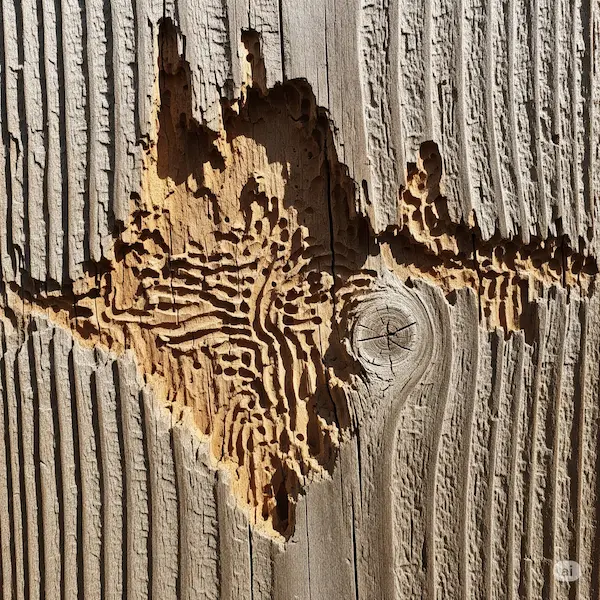
Wood fences can get damaged by bugs like termites or carpenter ants. If the wood sounds hollow or there’s sawdust near it, bugs might be eating it from the inside. That kind of damage is hard to fix.
Warning signs:
- Tunnels inside the wood
- Wood crumbles when you touch it
- Piles of frass (bug droppings) near the fence
How Long Does a Fence Usually Last?
How long a fence lasts depends on what it’s made of, how well you take care of it, and the weather.
| Fence Type | Average Lifespan |
|---|---|
| Wood | 10–15 years |
| Vinyl | 20–30 years |
| Chain link | 15–20 years |
| Wrought iron | 20+ years |
If your fence is older than what’s listed, it’s a good idea to start planning for a replacement.
Should You Repair or Replace?
Knowing when to replace a fence or just fix it depends on a few things:
| Factor | Repair | Replace |
|---|---|---|
| One or two damaged boards | YES | NO |
| Leaning or shifting structure | NO | YES |
| Rotting or rusting throughout | NO | YES |
| Outdated design or purpose | NO | YES |
| Frequent repair history | NO | YES |
Environmental Factors Matter
In places like Buffalo, NY, winters are really cold and summers can be very wet. Fences there go through a lot of freezing and thawing, which can crack wooden posts. That makes old fence issues like leaning and rotting happen faster.
To learn about fence materials that are better for tough weather, check out our post on Wooden Fence Installation and Maintenance for Homeowners in Buffalo, NY.
Legal & Safety Considerations
A damaged fence doesn’t just look bad, it can also cause legal trouble. If it doesn’t mark your property right or ends up on your neighbor’s land, you could have problems. And if someone gets hurt because your fence falls down, you might be responsible.
New York has rules about how high your fence can be and where it can go. To make sure you’re following the law, check out New York State’s Building Code Guidelines for residential fences.
Final Thoughts
Seeing signs of fence damage early helps protect your property. From rotting posts and leaning fences to old styles and too many repairs, these problems don’t just affect how your yard looks, they also affect your home’s safety and value.
So, when to replace a fence isn’t just about whether it’s broken. It’s about making sure it works for you, looks nice, and keeps your space safe.
If your fence has more than one of the problems we listed, it might be time to stop fixing it and get a new one. Your fence surrounds your home, make sure it’s doing its job well.
Frequently Asked Questions (FAQ)
If you're having the same problems over and over again, like rotting posts, leaning fences, or broken panels, and repairs are costing more each time, it might be smarter to replace the whole fence. Also, if your fence is getting old and past its average lifespan, it's probably time for a full replacement.
Watch out for clear signs like cracked or missing boards, wobbly posts, too much rust, strange colors, or parts of the fence leaning or falling over. These are big signs of fence damage that could mean your fence isn’t safe or strong anymore.
Sometimes, yes. If just one board or post is damaged, and the rest is still in good shape, you might be able to fix it. But if you're always dealing with old fence issues or the fence materials are wearing out, getting a new fence might be easier and look better overall.
Usually, a wooden fence can last about 10 to 15 years if you take good care of it. But things like the weather, the kind of wood used, and how often you do maintenance can change that. If your wooden fence has rotting posts or looks very old, it might be time to replace it.
Taking care of your fence is the best way to make it last. Clean it every season, seal or paint it to stop water from getting in, and check for bugs or rot. Also, make sure water drains well around your fence so you can avoid leaning fences or water damage.
Looking for a Fence That Lasts?
If your current fence is showing any of the signs we talked about, don’t wait until the problem gets worse. At All Pro Fence Buffalo, we build fences that are strong, safe, and look great.
We’ve been doing this for over 10 years in Buffalo, NY, and we can help with full installations, do-it-yourself kits, and custom fence styles that match your home. Call us today at 716-452-9399 or visit allp.kdmarketinggroup.com to get started!

